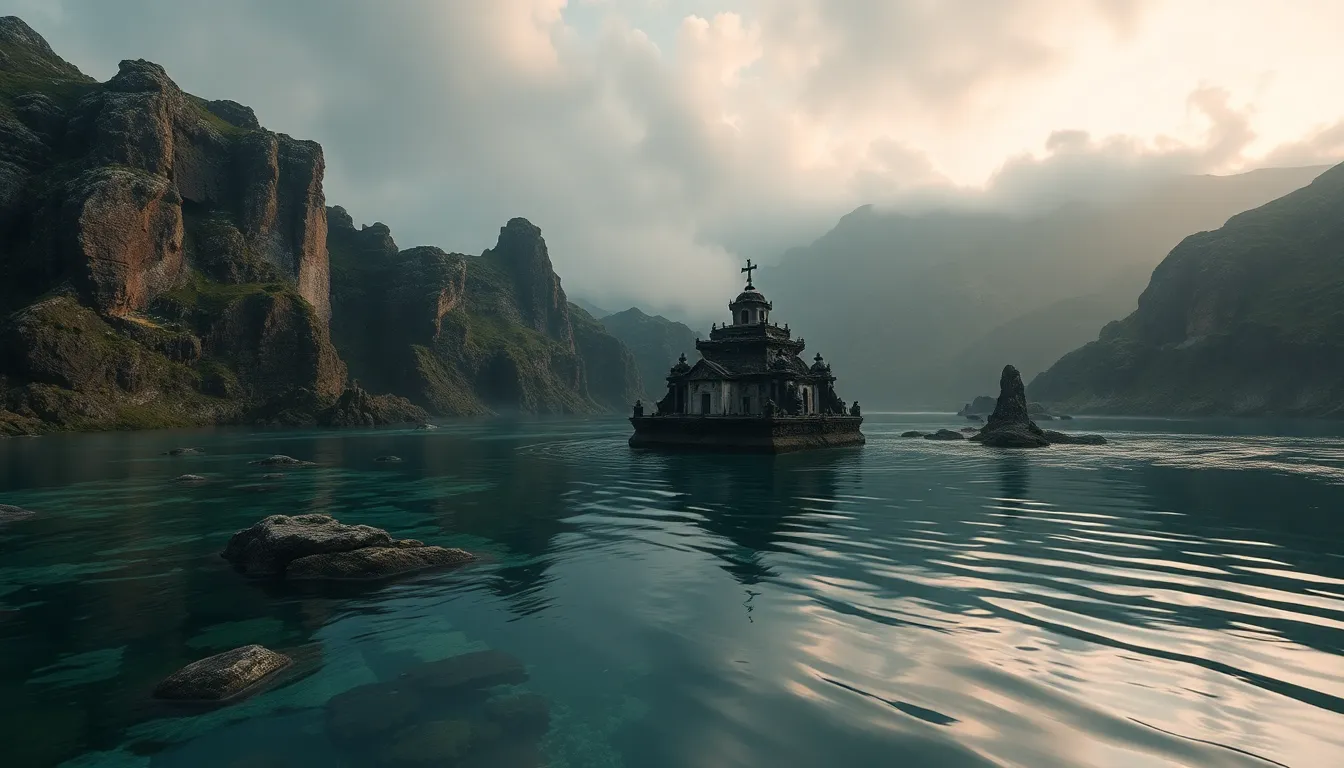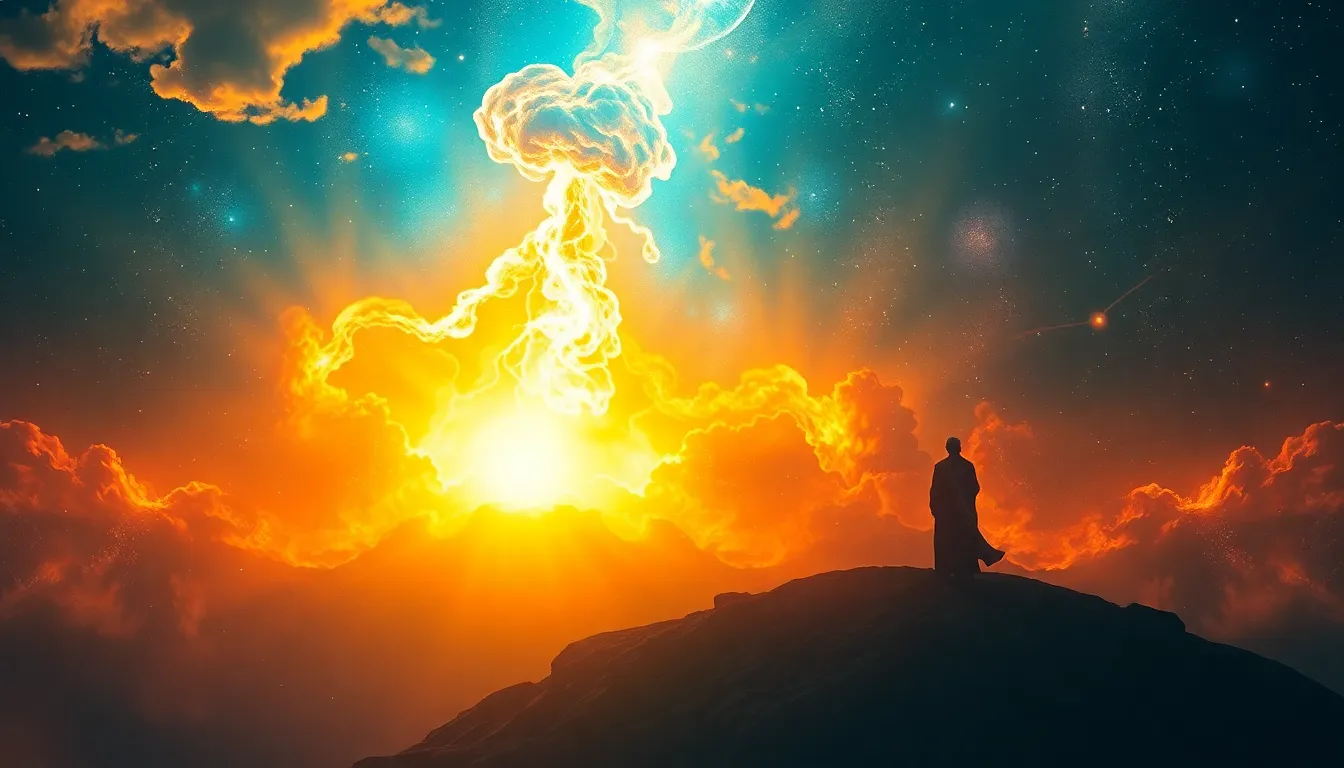The Mythical Tides: Sacred Places Shaped by Water
1. Introduction: The Interconnection of Water and Spirituality
Water has always been regarded as a vital source of life, an essential element that sustains existence across the globe. From the earliest civilizations to contemporary societies, water has held profound significance, often intertwined with spirituality and the divine. It is not merely a physical resource; it represents purity, renewal, and a connection to the sacred. This article explores the concept of sacred places shaped by water, examining how various cultures revere these sites and the myths that arise around them.
2. The Role of Water in Mythology and Religion
Throughout history, water has played a pivotal role in creation myths, symbolizing the primordial chaos that existed before the formation of the world. In many cultures, water is seen as the source of all life, often personified in deities and spirits. Here are a few notable examples:
- In Hinduism: The Ganges River is personified as Goddess Ganga, revered for her purifying properties.
- In Greek mythology: Oceanus was the divine personification of the ocean, believed to encircle the earth.
- In Aboriginal Australian culture: Waterholes and rivers are imbued with spiritual significance, tied to ancestral beings and stories.
These water deities influence not only spiritual beliefs but also the creation of sacred spaces, often leading to the establishment of temples and shrines near water bodies.
3. Ancient Civilizations and Water Worship
Many ancient civilizations regarded water as sacred, leading to the worship and reverence of rivers and lakes. Two prominent examples are:
- The Nile River in Ancient Egypt: The Nile was viewed as a divine gift, essential for agriculture and sustenance. Temples such as Karnak and Luxor were constructed along its banks, emphasizing the river’s sacred nature.
- The Ganges in India: The Ganges is not just a river but a living goddess. Pilgrims flock to its shores to bathe in its waters, believing it purifies them of sins and grants salvation.
Both civilizations constructed elaborate temples and monuments reflecting their deep spiritual connection to these water bodies.
4. Sacred Springs and Healing Waters
Springs are often considered gateways to the divine, believed to hold healing properties. Various spiritual traditions emphasize the significance of these sacred waters:
- Lourdes, France: The spring at Lourdes is famous for its miraculous healing abilities, drawing millions of pilgrims each year.
- Bath, England: The Roman Baths are built around a natural hot spring, once thought to be a place of healing and worship.
- Sacred Springs of the Celts: In Celtic tradition, many springs are associated with healing and are often linked to specific deities.
These springs are revered not only for their physical properties but also for their spiritual significance, often becoming sites of pilgrimage and ritual.
5. Pilgrimages to Water Bodies: A Journey of Faith
Water bodies often serve as focal points for pilgrimage practices, reflecting the transformative power of water in spiritual journeys. Notable examples include:
- Hajj: The annual Islamic pilgrimage to Mecca includes rituals around the Zamzam well, believed to be a source of divine sustenance.
- Kumbh Mela: A major Hindu festival where millions gather at sacred rivers like the Ganges to bathe and cleanse themselves from sins.
These pilgrimages highlight the central role of water in faith practices, symbolizing purification, rebirth, and spiritual renewal.
6. Sacred Lakes and Their Cultural Importance
Sacred lakes are revered across various cultures, often steeped in myth and legend. Consider the following:
- Lake Titicaca: Located on the border of Peru and Bolivia, it is considered the birthplace of the Inca civilization and is surrounded by numerous myths.
- Lake Baikal: The deepest and oldest freshwater lake in the world, it is sacred to the indigenous Buryat people and is rich in folklore.
These lakes not only provide resources but also serve as a canvas for cultural identity and spiritual beliefs.
7. Rituals and Ceremonies Involving Water
Across cultures, water plays a central role in various rituals and ceremonies, symbolizing purification and transformation. Some key examples include:
- Baptism: In Christianity, baptism signifies the washing away of sins and spiritual rebirth.
- Purification rituals: In many Indigenous cultures, water is used in cleansing ceremonies to prepare individuals for sacred events.
These rites of passage illustrate the symbolic nature of water, marking significant transitions in life.
8. Environmental Concerns: The Sacredness of Water Under Threat
Despite its sacred status, many water bodies face serious threats from pollution and climate change. Some of the pressing issues include:
- Industrial pollution degrading the quality of sacred waters.
- Climate change leading to droughts and altering natural water flows.
Indigenous movements have emerged, advocating for the protection of sacred waters, emphasizing the need to preserve these vital resources not only for spiritual reasons but also for ecological balance.
9. Personal Reflections: The Impact of Water on Spirituality Today
In modern spirituality, the reverence of water continues to play a vital role. Many people find solace and connection in natural water bodies, often sharing personal anecdotes of transformation and healing. Whether through meditation by a riverbank or ritual bathing in the ocean, water remains a profound symbol of life and spirituality.
10. Conclusion: Water as a Living Symbol of Sacredness
The enduring relationship between water and sacred spaces is a testament to its vital role in human life and spirituality. As we navigate environmental challenges, it is imperative to recognize the sacredness of our water bodies and advocate for their preservation. Water, in all its forms, continues to be a living symbol of sacredness, deserving of reverence and protection for future generations.



